
Summary
Over 50% of construction projects run over time and budget, typically taking 20% longer than scheduled and going over budget by up to 80%. However, even today there is still significant confusion about how to implement BIM effectively and unlock its demonstrable value.
The combination of BIM, artificial intelligence, digital transformation and big data is changing the face of construction. And with over 130 years of history Gleeds know that in order to capitalise on evolving trends you need to be prepared to respond to them.
Opportunity analysis
Market sizing & definition
Business case development
User research
UI, UX & visual identity
Front end engineering (React)
Back end engineering (NodeJS)
DevOps & infrastructure (AWS)
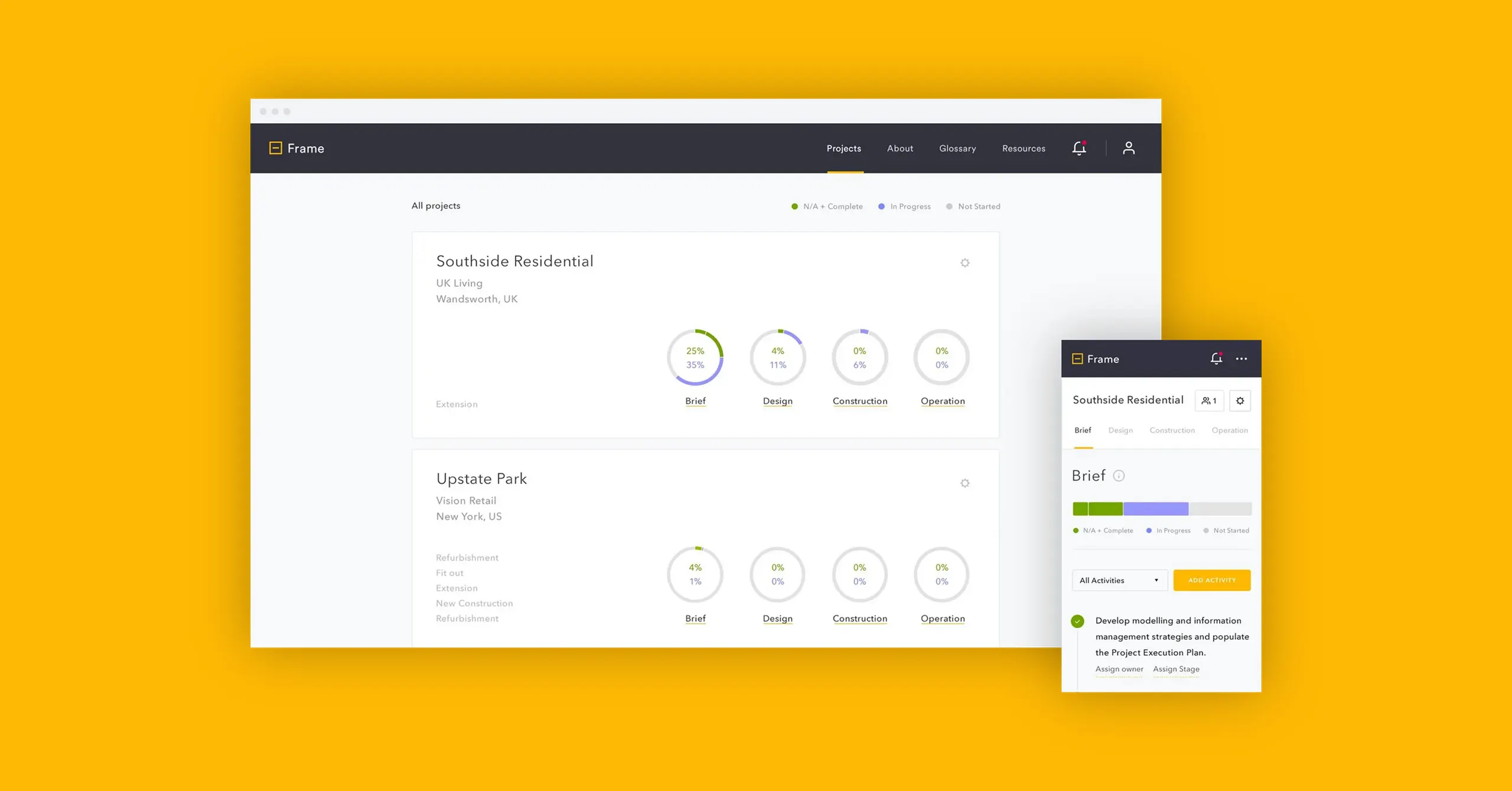
Building the business case
We worked with Gleeds to look at past company performance and future goals; market and industry challenges; short term efficiency gains; pitch differentiators; and riskier bets such as taking entirely new products and services to market.
Our final business case aimed at transforming productivity and project delivery by marrying the best of BIM Level 2 standards, years of domain expertise, and cutting edge product design and technology. It centred around an end-to-end project management tool for large scale construction projects, both as an immediate internal capability and potentially a new standalone B2B product we could take to market.

Managing change
Launching any new product within an existing organisation is a complex human task. We had to build trust and confidence across the organisation early and maintain it throughout the process.
Having structured inclusion and continuous communication was key to building a clear change story and ensuring adoption later on.
Every two weeks we set time aside to create a shareable report with details of the current progress, involvement from internal teams, requests for participation and any upcoming disruption or impact on the business.

Working software over comprehensive documentation
With the business case signed off we moved into 2-week cycles of agile software design and build.
Our team of engineers, designers and product strategists worked closely with Gleeds and their clients to translate existing information and processes into working software to help us test and validate our ideas with users quickly and with minimal waste.
Over three months we developed the product experience, user interface, front and back end technology and DevOps infrastructure.
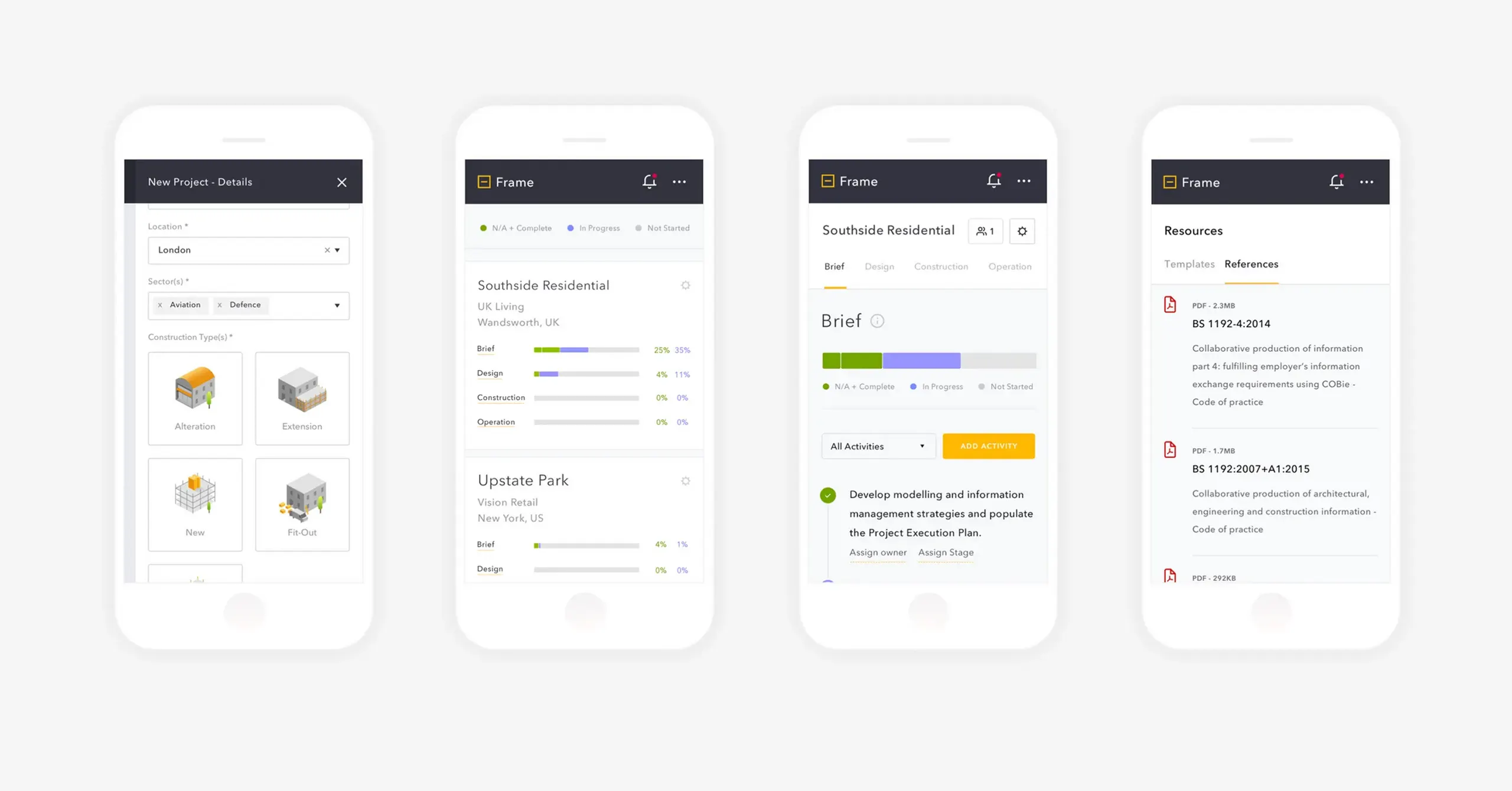
Customer and business centric technology choices
There are several distinct user types within Frame, (e.g. Client, Architect, Information Manager), each accessing the product from different devices and locations. However, it became clear from user testing that most of the heavy lifting would be done on desktop by the Information Managers. Because of this we decided to de-prioritise some native capabilities in favour of near universal reach you get from a web based front end from day one.
On the backend we chose NodeJS which allowed us to move very fast with a relatively small team. Although our developers tend to have expertise in either back or front end, by using Node they had flexibility to support both sides if necessary, helping to maximise utilisation.
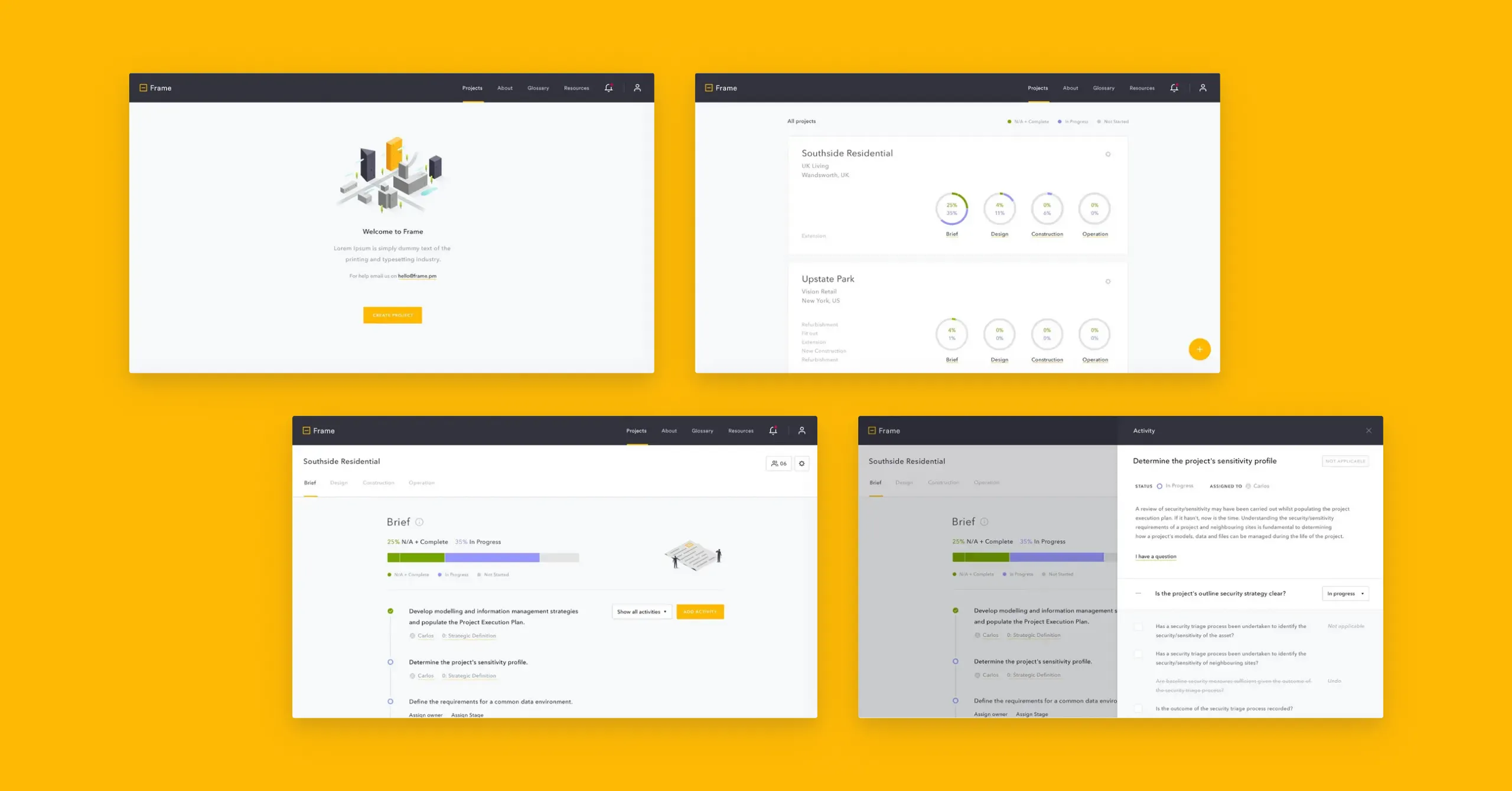
Validation before visual flare
At Elsewhen we believe in brand as experience, i.e you can get away with a sub par visual identity if your product solves a real problem well. But great branding will never save a pointless or unusable product. That's not to say we don’t create beautiful visual identities, but our approach is just enough, just in time.
We used an integrated tool chain of Sketch, InVision and working software to move quickly from whiteboard to hi-fidelity visuals, skipping over the antiquated B&W wire framing stage.
This freed up vital time for user testing and validation while still allowing our brand foundations to emerge organically through each design iteration.
The outcomes
Within 6 months Gleeds had a comprehensive proof of value and strategic roadmap, a customer centric productisation of BIM Level 2, and a new end-to-end digital product in market.
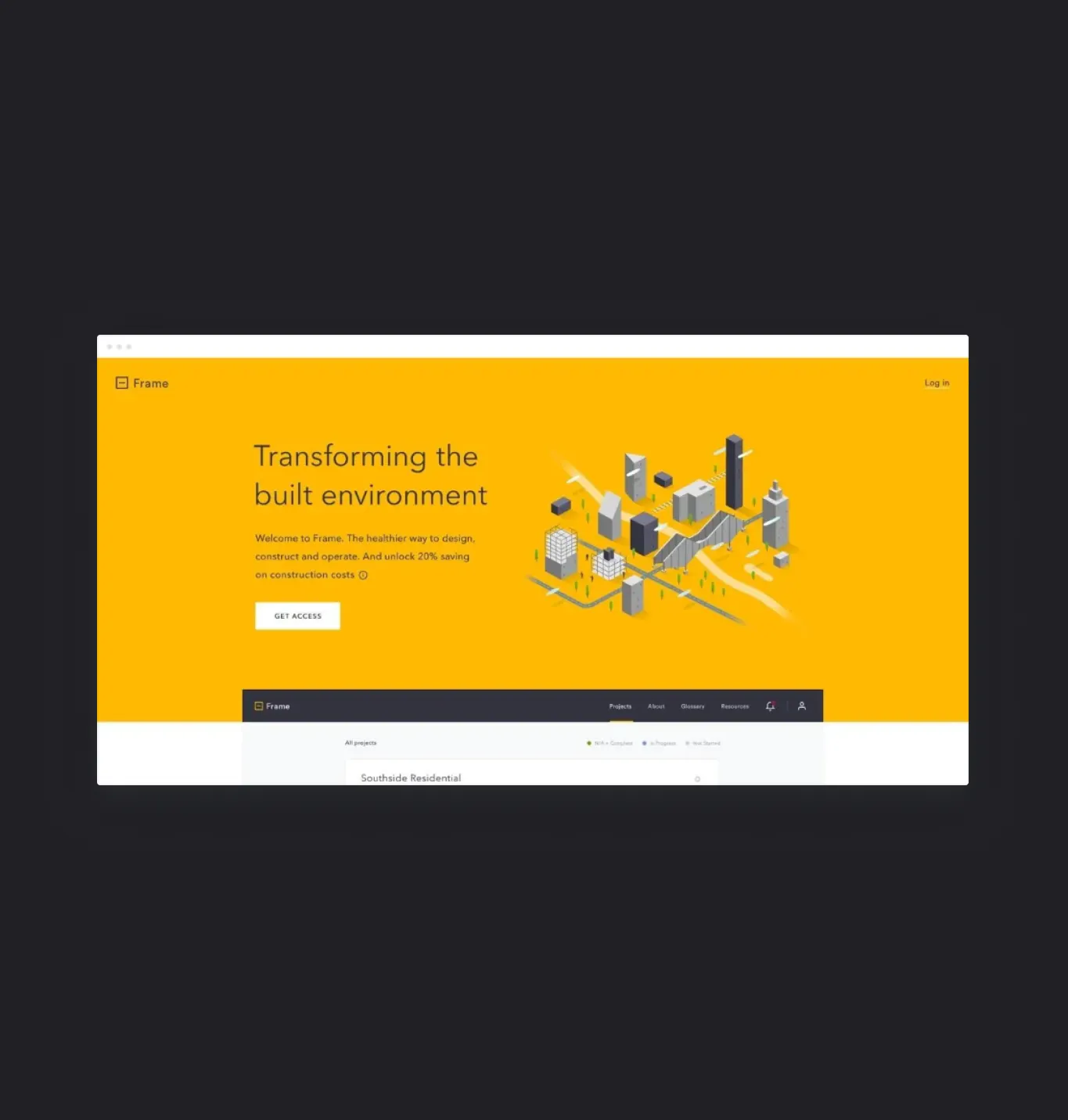
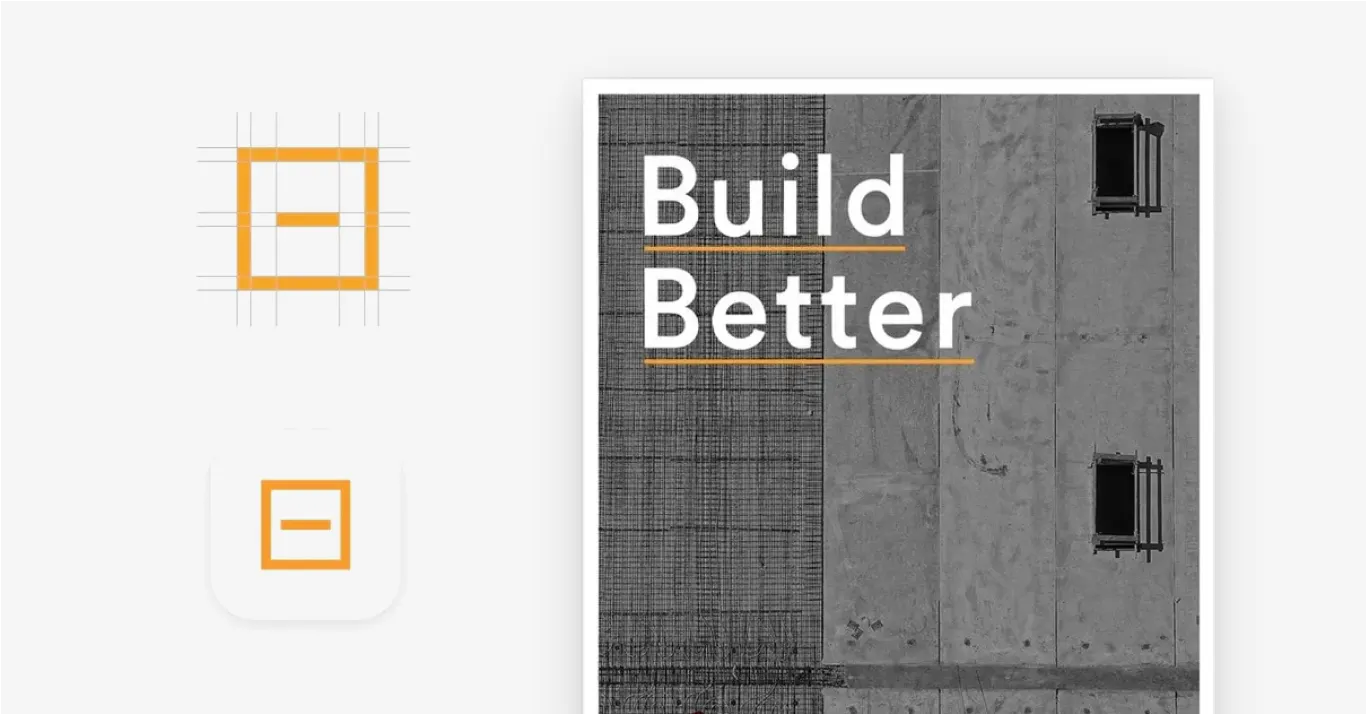

“Elsewhen’s ability to understand our business quickly and translate that into strategy was impressive. But seeing Frame realised, end-to-end, and taken to market in 6 months was something else altogether.”
Stuart SeniorDirector, Executive & UK Board

